| |
 |
|
Email |
|
| |
|
| |
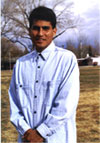 Training
For The Half Marathon Training
For The Half Marathon
Article By: Marco Ochoa, Orange Coast College
For many athletes running
a half marathon is not on their annual racing schedule. Runners
usually tend to race distances that are familiar to them so they
can compare and measure their success and improvement. The half
marathon can be considered an awkward distance to be racing which
makes it difficult to focus on such a distance. Developing a training
program for this distance can be complicated for many runners
mainly because of the odd distance. It can be too long for a 5k-10k
runner or it may be too short for the marathon runner; so many
runners pay no importance to this specific race distance.
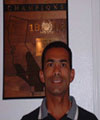 Training
A Miler Training
A Miler
Article By: Rich Medallin, Esperanza High School
Rich Medellin's thoughts/beliefs
on coaching Ryan Bousquet to a 4:06.97 mile.
When asked, "What do
you feel is the reason for your big improvement this year (from
4:16.98 to 4:06.97) in less than 50 words," Ryan could not answer
the question. He said that the best way for him to answer the
question was to use singular words but he felt people would not
get the complete picture (and I agreed).
Running Training,
Principles and Needs: Part 5
Setting Up A Season of Training.
Article By Jack Daniels:
Any time that you go
about the task of setting up a running training program -- be
it for yourself, an individual you are coaching, or a team of
runners -- there are several questions that must be answered relative
to each runner in the program They include such considerations
as available time, strengths and weaknesses, likes and dislikes,
current fitness, etc.
Training For The Marathon
Article By Marco Ochoa, Orange Coast College
Running a marathon has
always been a big challenge for many runners. Even if it is going
for a fast time, trying to go for a personal best, or just to
finish the race, runners are always looking for the best training
program that will lead them to accomplish their goal. The individual
runner will be faced with many questions concerning his or her
training. Questions like; how many miles to run per week, the
intensity and volume of the work-outs, recovery, long runs etc,
etc. Well, first of all we need to understand that there is no
specific answer to these questions because every individual runner
is unique. But, a coach can prescribe a specific training program
to the athlete according to his or her ability and goal for that
specific marathon.
Running Training, Principles
and Needs: Part 4
Determining your current level of fitness.
Article By Jack Daniels:
By using standard
values for running economy and by having a timed Performance over
at least one running distance, a fitness ("VDOT") value
can be assigned to you for training and race-prediction purposes.
Table 1 provides this information. To use this VDOT Table,
you merely look up a time associated with a distance you have
recently run and read across to the column headed by "VDOT".
VDOT is an adjusted V02max (which may or may not match a laboratory-generated
V02max), which tells you how you might race for other distances
(in the row, associated with the same VDOT), and also tells you
how first to perform different types of training (Table 2 provides
the training-intensity information).
Running Training, Principles
and Needs: Part 3
Goals of Training
Article By Jack Daniels:
What a runner is
really trying to accomplish through traiing are the following.
(1) Improve the body's ability to transport blood and oxygen,
(2) Increase the ability of the running muscles to effectively
utilize their available oxygen (to convert carbohydrate and fat
fuel into useful energy), (3) Increase V02max, which is a sum
of #1 and #2, above, (4) shift lactate threshold to correspond
to a faster running speed,(5) improve speed, and (6) lower the
energy demand of running (improve economy). Naturally, there are
other goals of training, such as improving race tactics, elevating
self-confidence, changing body composition, bettering self-image,
etc., but these less-tangible factors will all result from improvement
in one or more of the above-mentioned factors.
Running Training,
Principles and Needs: Part 2
Aerobic Profile
Article By Jack Daniels:
The following discussion
summarizes the importance Of V02max, (maximum oxygen consumption),
running economy (VO2submax), and lactate threshold (threshold)
for a distance runner.
Running Training,
Principles and Needs
Article By Jack Daniels:
Training
principle #1 -- the body reacts to stress. There are two types
of reaction to the stress of exercise: 1) An acute reaction, such
as you would experience if you got up from your seat, went outside
and ran to the comer. Heart rate speeds up, stroke volume (the
amount of blood pumped with each beat of the heart) increases,
ventilation rate and depth of breathing increase, blood pressure
rises, your muscles feel some fatigue, etc. If you perform this
ritual--running to the comer-on a regular basis, then you will
continue to get regular, acute reactions to this activity. You
will also get a different reaction to the repeated, chronic exercise,
or training, as we favor calling it.
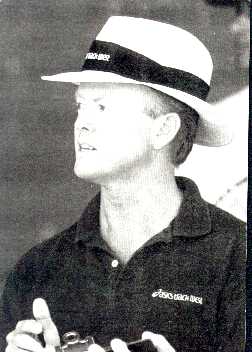 Developing
the 800-1,600 Meter Runner Developing
the 800-1,600 Meter Runner
Article By Skip Stolley: Coordinator AAF/CIF Coaching Programs
In a race proceeding
at 6-7 meters per second, tactical errors can be irreversible.
800-meter runners have to make decisions and respond to events
in their race in a split second. A moment's hesitation can be
the difference between winning and losing in a race that lasts
about two minutes.
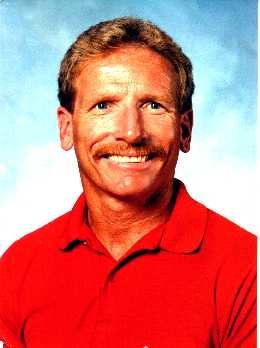 The
Total Distance Runner The
Total Distance Runner
Article By Jim Arquilla: Long
Beach Wilson
Many distance
coaches have trouble getting their runners to enjoy track. Distance
runners enjoy the wide open spaces of cross country running, but
many feel confined by running continuously around a track. If
they become bored and lose interest it results in poor performances.
Athletes who are great cross country runners may become only good
or average track runners.
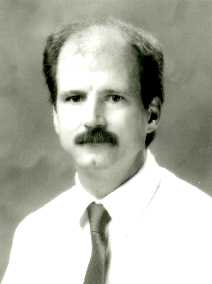 Restoration
and the Transitional Period Between Cross Country and Track Season Restoration
and the Transitional Period Between Cross Country and Track Season
Article By Jack Ransone Ph. D. :
Restoration
is a very important component of any exercise training program.
Hans Selye, back in the 1950's, outlined the stress-adaptation
syndrome of which recovery was a key to adaptation and compensation.
Further research of Matveyev (USSR) and Harre (GDR) in the 1970's
applied Selye's basic research in a stable and useable training
philosophy. They applied work to recovery ratios to the training
of athletes and establishing training cycles where exercise and
recovery were theoretically quantified.
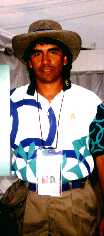 Coaching
the 800, 1500-1600 Runner Coaching
the 800, 1500-1600 Runner
Article By Manny Bautista
When coaching
the 800-1600, the coach must find the right combination of both
speed and endurance for that particular athlete. The coach must
first determine if that athlete is a 400/800 type or a 800/1600
type. If your athlete is a 400/800 type, then they have good speed
and handle short interval workouts well, but they don't handle
the longer repetition type workouts as well. When working with
800 runners, in general, you don't need lots of time on the track.
Remember, they only run 2 laps. The most important thing is to
simulate parts of races in training. If you have a sophomore boy
who you think can run under 2:00, then at some point that athlete
has to get used to coming by the 400 in 58 seconds and keep going
by the 600 in 1:28 at least.
Northern Arizona University
Distance Running
Article By Ron Mann, Head Track & Field
coach Northern Arizona University
If athletes
follow sensible progressions of workouts throughout the course
of the season, they will not experience what we often refer to
as "peaking out." Workouts must be kept interesting,
as well as challenging, to prevent athletes from imagining they
are experiencing this phenomenon. However, if early season interval
workouts, for example, are made too intense and if too much emphasis
is placed on major competitions early in the season.
International Copyright © of CoachesEducation.com. All Rights Reserved.
Reproduction in whole or in part in any form or medium without
express written permission
of CoachesEducation.com is strictly prohibited.
|
|
|
|
![]()




